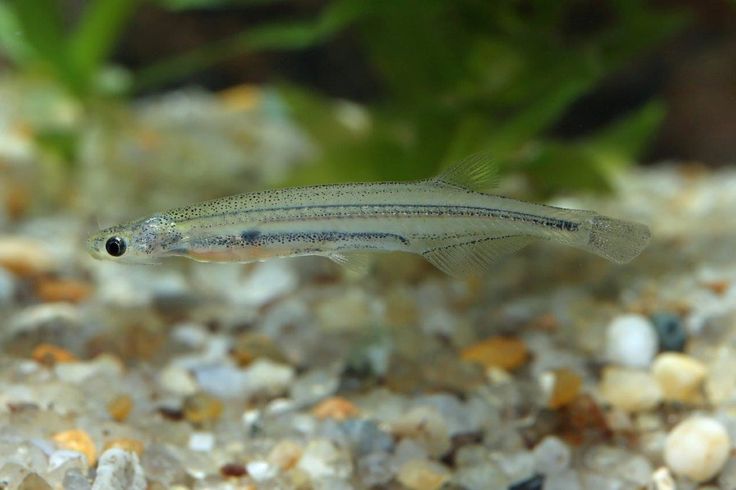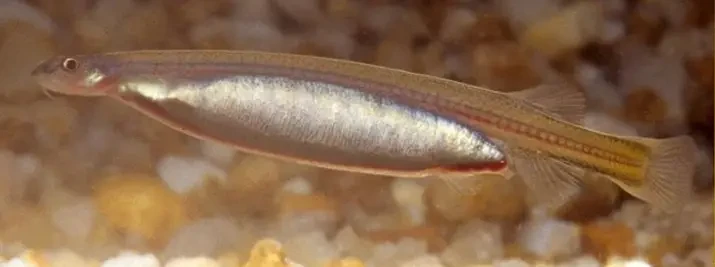Vandelia vulgaris (Vandellia cirrhosa), better known as kandiru,- one of the most mysterious and at the same time infamous fish of the Amazon. Thanks to numerous legends and myths, it has gained a reputation as a bloodthirsty parasite that can enter the human urinary tract.
🔹 What makes Vandelia unique?
✔ One of the few parasitic fish that feeds on blood
✔ It lives in freshwater rivers in the Amazon and Orinoco basins
✔ It has a semi-transparent body, which makes it almost invisible in water
✔ For a long time, it was considered a dangerous parasite for humans, although scientific studies refute some myths.
Because of its parasitic nature and unusual way of feeding, Vandelia vulgaris is one of the most interesting and least studied representatives of the ichthyofauna of South America.

Scientific classification
🔬 Taxonomy of Vandelia vulgaris:
✔ The Kingdom: Animals (Animalia)
✔ Type: Chordal (Chordata)
✔ Class: Lucheperi pisces (Actinopterygii)
✔ Row: Catfish-like (Siluriformes)
✔ Family: Trichomycetes (Trichomycteridae)
✔ Gender: Vandelia (Vandellia)
✔ View: Vandellia cirrhosa
📌 Interesting!
Vandelia vulgaris is a catfish-like fish, although it looks more like a small snake than a typical catfish.
Description and anatomy
🔹 Appearance:
✔ The body is elongated, thin, almost transparent
✔ Length - from 2 to 7 cm (average 4-5 cm)
✔ The head is small, with a sharp snout
✔ The eyes are small, almost invisible
✔ There are spikes on the gill capsthat help it gain a foothold on the victim
✔ Fins are short and poorly developed
🔹 Masking and behavior:
✔ Almost invisible in water thanks to its transparent body
✔ It lives in the bottom layers of water bodies, where it lies in silt or sand
✔ Most active at night
📌 Interesting!
Due to its translucent body and small size, vandelia is almost invisible in water, making it an ideal parasitic predator.
Range and habitat
🌍 Where does Vandelia vulgaris live?
✅ Freshwater rivers of South America:
• Amazon
• Orinoco
• Rivers of Ecuador, Peru, Brazil, Colombia and Bolivia
🔹 Living environment:
✔ Prefers muddy, stagnant or slow waters
✔ It lives in soft soil-sand-silt or among vegetation
✔ Likes places with a high organic content, where there are a lot of large fish
📌 Interesting!
Vandelia can withstand conditions with low oxygen levels, which helps it survive in the least favorable areas of water bodies.
Life cycle and reproduction
🔹 Spawning:
✔ Occurs during the warm season, when the water becomes as warm as possible
✔ Female lays eggs from 200 to 500 eggsthat settle in the silt
✔ Larvae develop over a long period of time. 10-14 days
✔ Young individuals begin to parasitize after a year. 2-3 months
📌 Interesting!
Small vandelia fry first feed on microorganisms, and then switch to a parasitic lifestyle.
Nutrition and lifestyle
🔹 What does Vandelia vulgaris eat?
✅ Blood of large fish (for example, catfish, piranhas,arapaim)
✅ Organic residues in water
🔹 Hunting tactics:
✔ It searches for prey based on chemical signals-ammonia and urea-released by fish gills
✔ Penetrates the gill cavity, is fixed by spines and sucks blood
✔ It can stay on the fish for a few minutes, then swims away
📌 Interesting!
Unlike piranhas, vandelia does not kill the victim – it only temporarily sucks the blood, after which the fish remains alive.
Vandelia Myths: True or False?
⚠ The myth: Vandelia can creep into a person's urinary tract.
✅ Truth: Although there are such stories, there is almost no scientific evidence. Vandelia is attracted to the chemical compounds in the water, but its natural environment is fish gills, not the human body.
⚠ The myth: Vandelia is more dangerous than piranhas.
✅ Truth: Vandelia doesn't attack humans and doesn't have jaws that can do serious damage.
📌 Interesting!
The only known case of vandelia entering the human body occurred in 1997 in Brazil, but scientists believe that this was an isolated incident, and not the natural behavior of fish.

Human and ecosystem implications
🔹 Major threats to the species:
❌ Pollution of water bodies and destruction of natural habitats
❌ Reducing the number of large host fish
❌ Commercial capture and use of vandelia in the aquarium industry
🔹 Role in nature:
✔ Regulator of large fish populations
✔ Water purification from organic residues
📌 Interesting!
Some locals use vandelia for fishing, tying it to a hook so that it penetrates the gills of large fish.
Conclusion
🐟 Vandelia vulgaris is a true legend of the Amazon, which is more suitable for scientific research than for horror stories.
🌍 Its unique parasitic lifestyle helps to maintain the balance of the ecosystem, and myths about its dangers require critical reflection.
📢 Have you ever heard of this fish before? Do you believe in the legends of kandir? 🧐🔬